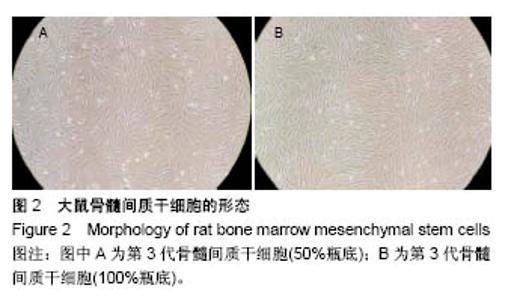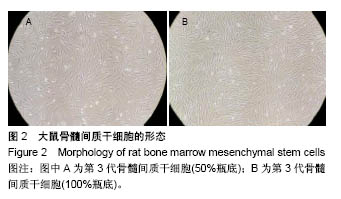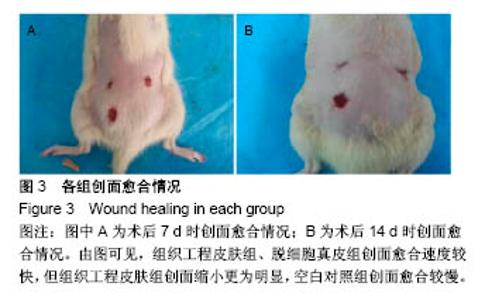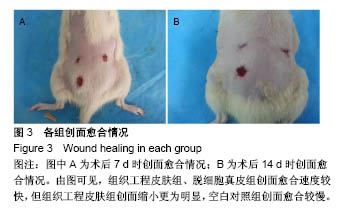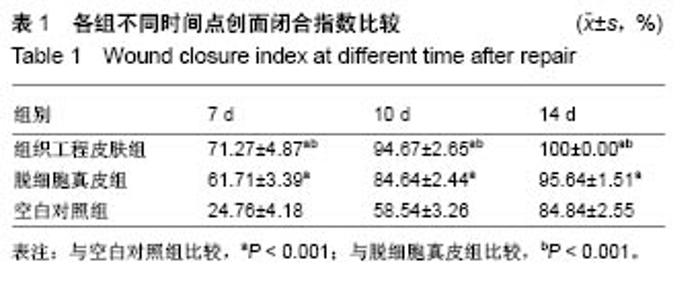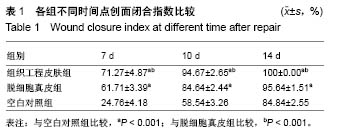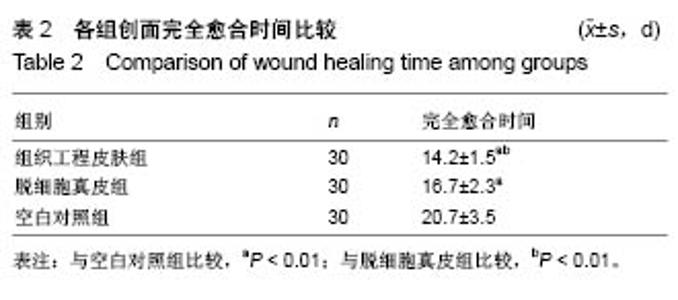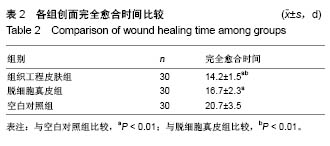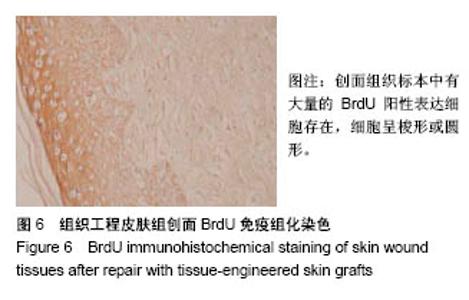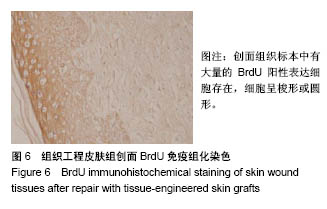| [1] 陈璧,姜笃银,贾赤宇,等.复合皮移植的实验研究与临床应用[J].中华烧伤杂志,2004,20(6):347-350.[2] Duffy MM, Ritter T, Ceredig R, et al. Mesenchymal stem cell effects on T-cell effector pathways. Stem Cell Res Ther. 2011; 2(4):34.[3] Delirezh N, Shojaeefar E, Parvin P, et al. Comparison the effects of two monocyte isolation methods, plastic adherence and magnetic activated cell sorting methods, on phagocytic activity of generated dendritic cells. Cell J. 2013;15(3): 218-223.[4] 李晓峰,赵劲民,苏伟,等.大鼠骨髓间充质干细胞的培养与鉴定[J].中国组织工程研究与临床康复,2011,15(10):1721-1725.[5] 刘坡,祁少海,舒斌,等.异体脱细胞真皮基质作为组织工程皮肤真皮支架的可行性[J].中国组织工程研究, 2012,16(21): 3864-3868.[6] Alhadlaq A, Mao JJ. Mesenchymal stem cells: isolation and therapeutics. Stem Cells Dev. 2004;13(4):436-448.[7] Lee RH, Kim B, Choi I, et al. Characterization and expression analysis of mesenchymal stem cells from human bone marrow and adipose tissue. Cell Physiol Biochem. 2004;14 (4-6):311-324.[8] Rasini V, Dominici M, Kluba T, et al. Mesenchymal stromal/ stem cells markers in the human bone marrow. Cytotherapy. 2013;15(3):292-306.[9] Lu X, Alshemali S, de Wynter EA, et al. Mesenchymal stem cells from CD34(-) human umbilical cord blood. Transfus Med. 2010;20(3):178-184.[10] 韩跃东,刘玲.组织工程皮肤的临床应用[J].国际皮肤性病学杂志志,2007,33(6):340-342.[11] Mirastschijski U, Bugdahl R, Rollman O, et al. Epithelial regeneration from bioengineered skin explants in culture. Br J Dermatol. 2006;154(1):42-49.[12] 迟作华,张洹,陆琰,等.人骨髓间充质干细胞分离方法的比较[J].中国临床康复,2006,10(1):20-22.[13] Pereira RF, Halford KW, O'Hara MD, et al. Cultured adherent cells from marrow can serve as long-lasting precursor cells for bone, cartilage, and lung in irradiated mice. Proc Natl Acad Sci U S A. 1995;92(11):4857-4861.[14] Zhang B, Wang F, Deng L, et al. Isolating and culturing rat marrow mesenchymal stem cells and studying their phenotypical and functional properties. Sichuan Da Xue Xue Bao Yi Xue Ban. 2003;34(4):738-741.[15] Boiret N, Rapatel C, Veyrat-Masson R, et al. Characterization of nonexpanded mesenchymal progenitor cells from normal adult human bone marrow. Exp Hematol. 2005;33(2): 219-225.[16] Jones EA, English A, Kinsey SE, et al. Optimization of a flow cytometry-based protocol for detection and phenotypic characterization of multipotent mesenchymal stromal cells from human bone marrow. Cytometry B Clin Cytom. 2006; 70(6):391-399.[17] Gao K, Lu Y, Li S, et al. Isolation, culturing and growth characteristics of mesenchymal stem cells from bone marrow of Rhesus monkey, Macaca mulatta. Sheng Wu Yi Xue Gong Cheng Xue Za Zhi. 2007;24(6):1343-1347, 1351.[18] Nadri S, Soleimani M, Hosseni RH, et al. An efficient method for isolation of murine bone marrow mesenchymal stem cells. Int J Dev Biol. 2007;51(8):723-729. |
